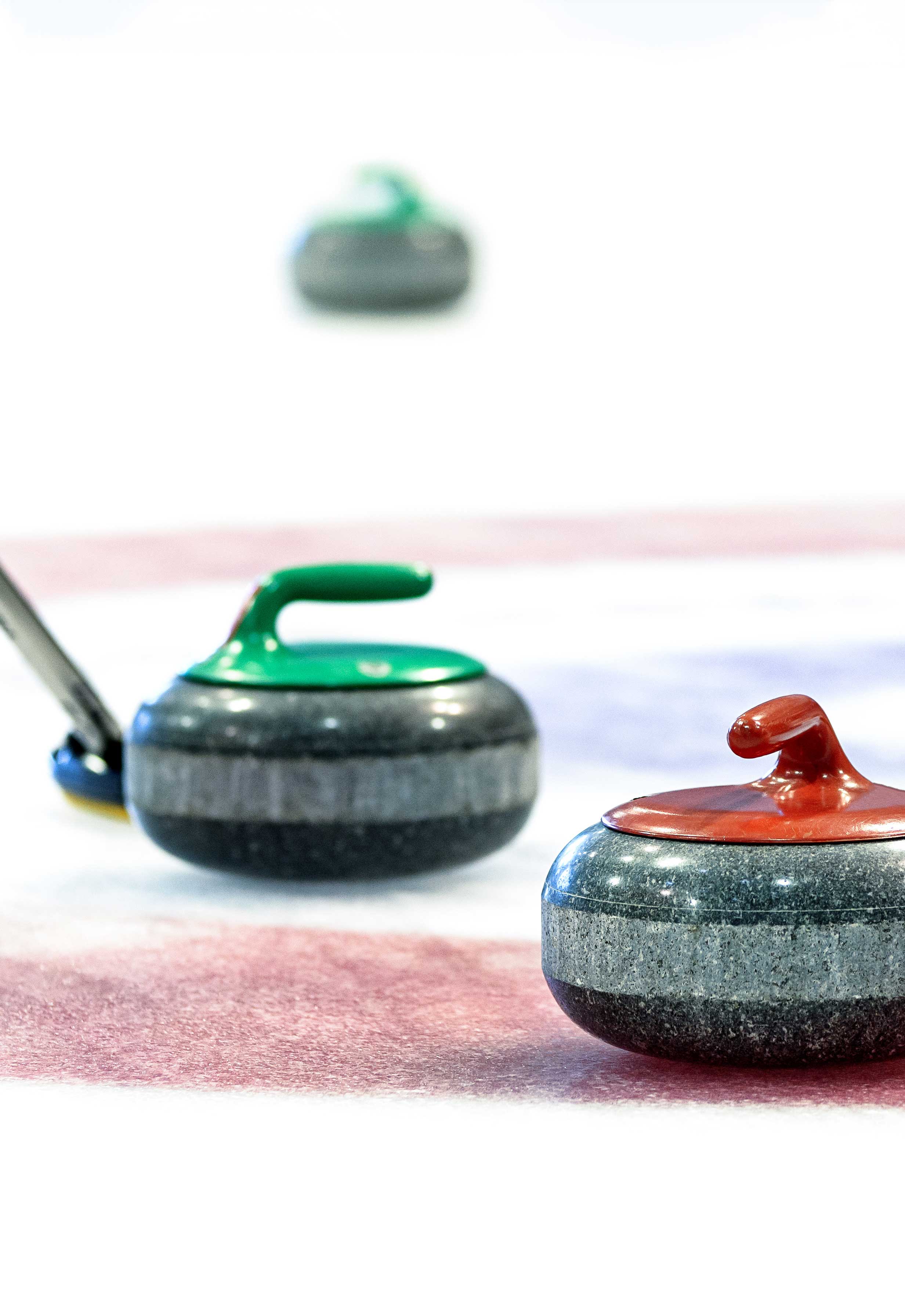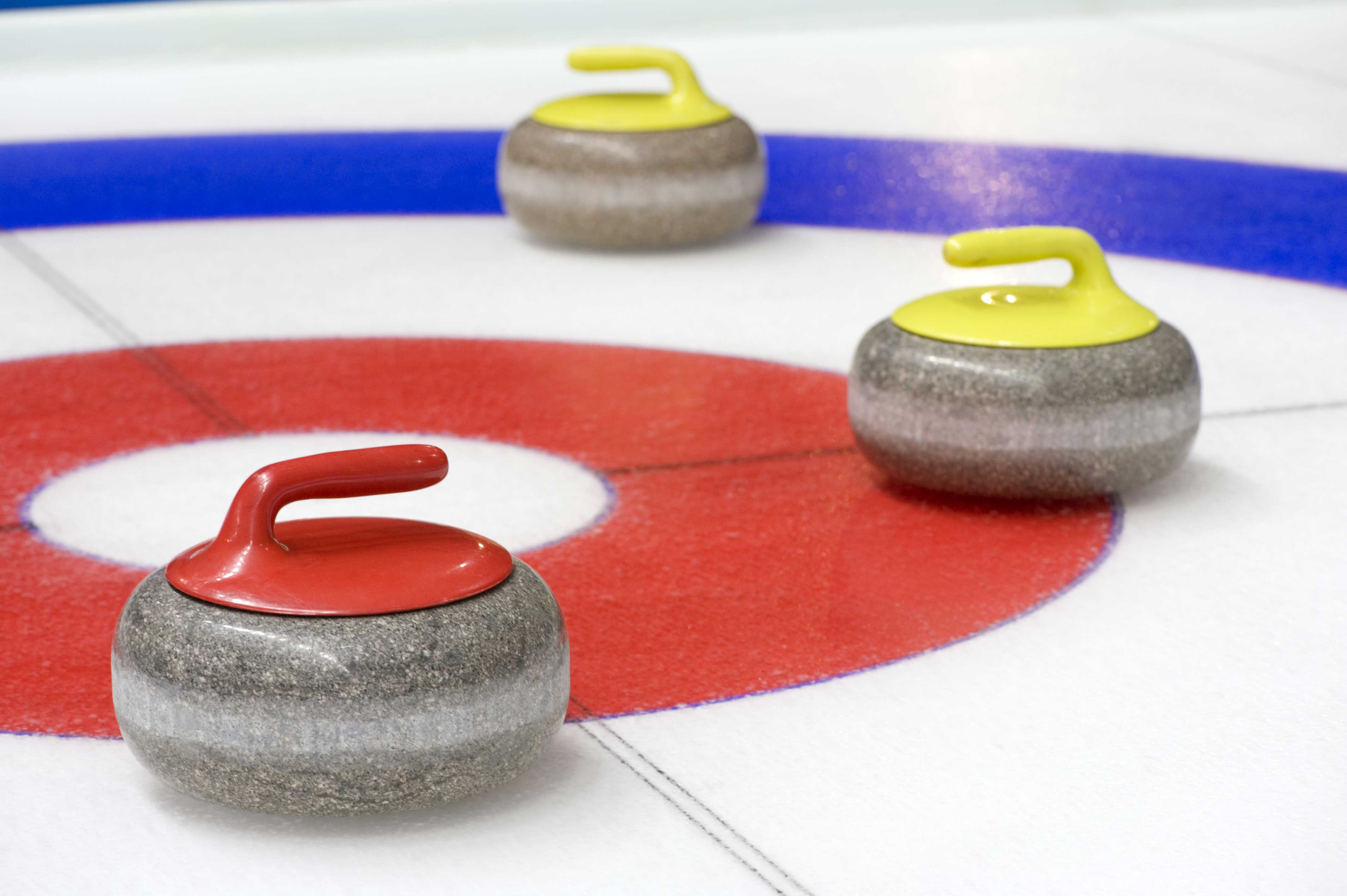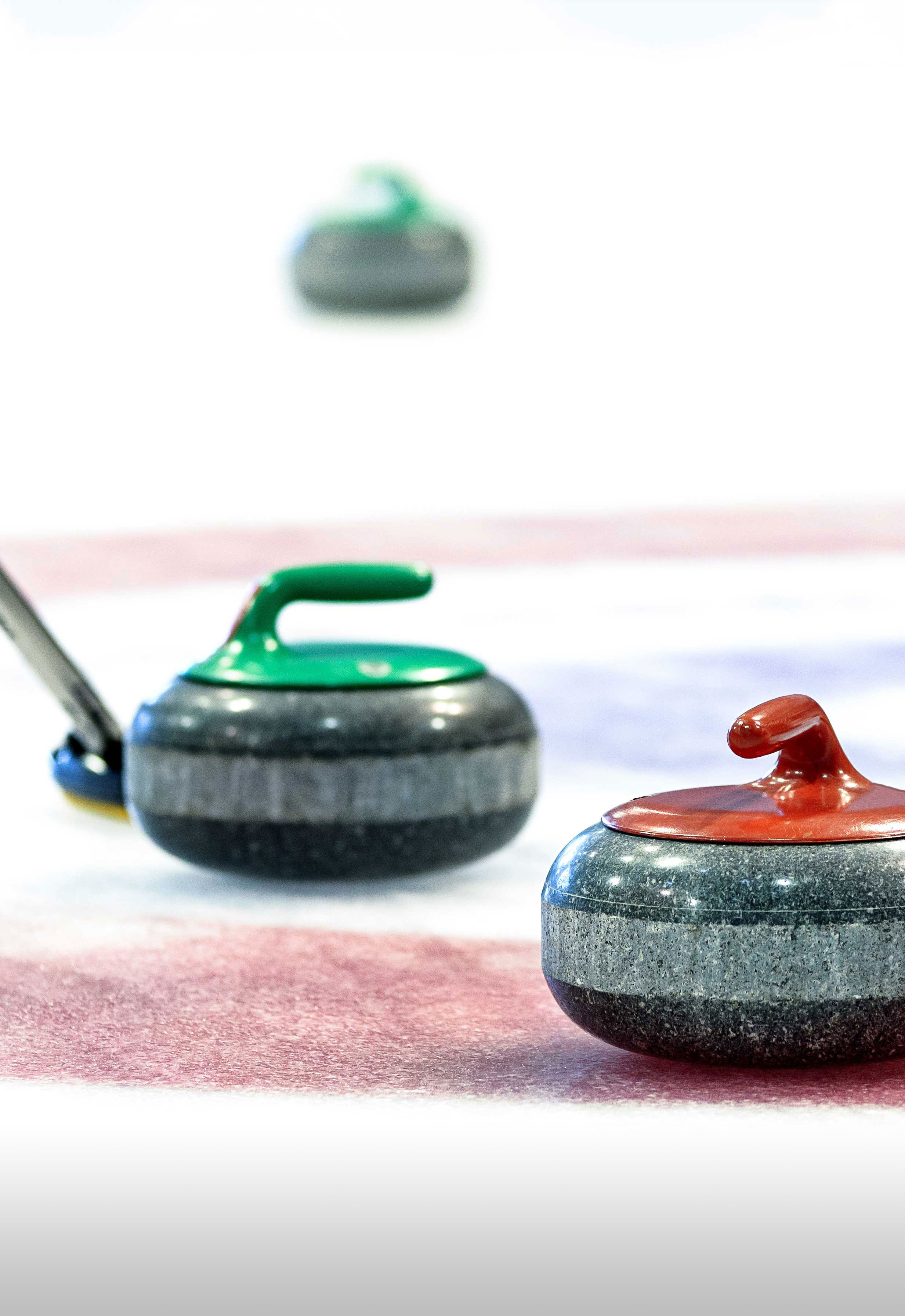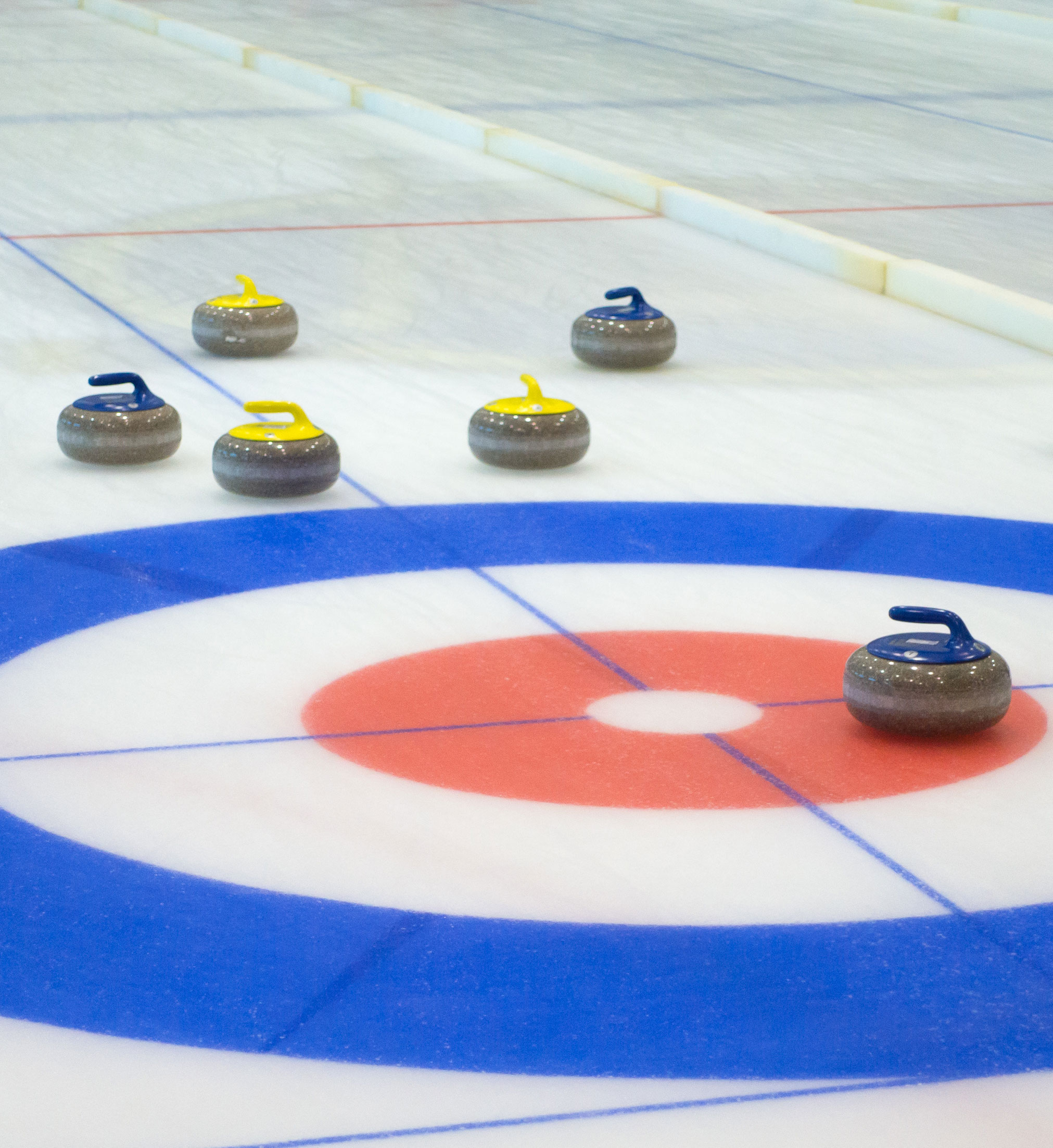
Curling at the Waterfront
How much do our lessons cost?
Please contact david.horne@inverclydeleisure.com regarding lessons & our costs.


Etiquette
Curling is a game of skill and traditions that upholds the highest standards of sportsmanship. A shot well played is a delight to see as is a game played in the true spirit of curling.
Curlers play to win but never to humble their opponents. Curling has always relied on the common sense, honesty and the good manners of the players and a sporting approach to the game.
While the main object of the game of curling is to determine the relative skill of the players, the spirit of curling demands good sportsmanship and honourable conduct.
The Ice
Curling is played on a ‘sheet’ of ice approximately 45 metres long by 5 metres wide with a target, the ‘house’, marked at each end. The house consists of three rings which are generally coloured red, white and blue and act as a visual aid for aiming and judging which stone is closer to the centre. The smallest circle in the house is called the button.
Blocks or ‘Hacks’ are fixed at each end of the sheet to give the person delivering the stone something to push against.
The two lines between the houses are called the hog lines. The players must release the stone before they reach the first hog line and the stone must cross the far hog line to be in play. The line behind the house is called the back line. Once a stone fully crosses this line it is out of play.
The line in the middle of the rink is called the centre line and is used by the players to line up their shots.
Curling stones are made from granite and weigh around 20kg. The handle allows the stone to be gripped and rotated upon release. ‘Hacks’ are rubber blocks that are fixed at each end of the sheet to give the person delivering the stone something to push against. Stones are provided at all curling rinks.
Curlers ‘sweep’ the ice in front of their team’s stones to melt the ice slightly using a curling brush. This helps the stone to travel further and can influence the direction. Sweeping also helps to clear any debris from the path of the stone. Brushes are available at curling rinks for general use.
Delivery sticks allow stones to be delivered from a standing position or wheelchair and are available for those with mobility issues.
General Guidelines…
Learn to Curl Programme Guidelines:
- Learners should arrive promptly for their lesson.
- Always wear, clean, flat-soled shoes (trainers are ideal)
- Clothes that won’t restrict movement, warm layers and gloves are recommended.
- Medical conditions should be advised to us on the application form.
Safety Guidelines:
- Do not lift stones; they are very heavy and could hurt you as well as damage the ice
- Keep your brush by your side when not in use; it is not a golf club, hockey stick etc!
- Always step on to the ice with your gripping foot first
- Be careful to avoid walking in front of someone delivering a stone
- Always stand up on your gripping foot first after delivering a stone
- Always walk back up the sides of the sheet of ice, and not the middle of the sheet of ice
- Call out ‘ICE’ if a stone is travelling towards someone and is of danger to them
- If you have any injuries we should know about, please tell your coach.

